Last week, we were invited by Sony to go to the Tokyo headquarters in Japan to learn more about the technical features of the Sony flagship TV Z9D under the leadership of Japanese engineers. As the absolute flagship of Sony's flat-Panel TV products in recent years, the master version of the dynamic backlight system with high-density backlight and the ability to use a single backlight as a backlight partition allows the Z9D to rival or even exceed the strength of OLED TVs. Of course, this flagship TV also incorporates Sony's many image quality processing technologies. However, in this article, we focus more on introducing the significance of the dynamic backlight system master version and the backlight system to the improvement of TV picture quality. I try to use shallow The deep description allows everyone to understand the technical characteristics of the Z9D.
Sony Z9D 4K HDR LCD TV Sony China official website 32999 yuan>>Click to visit

Imagine that near 11.11, you are going to bid farewell to the last single girlfriend to propose to his girlfriend for many years. The way is sure to be various. You don't bother to make a surprise attack on the gap between the three or five friends and eat dinner. Shaped candles placed in the mall or beach door called romance, you want to be more special, more unexpected ways to move his girlfriend, such as when she called her down the floor to work overtime, say something of concern to send her back to the building to continue work Just when turning around, the lights of the whole building suddenly went out. After a short time of doubt, the pixel pattern of I Love XX suddenly turned on, and the next thing would be very smooth.


I'm sorry to say this as a beginning of a TV commentary in this way without experience. Actually, this is a very appropriate example. Of course, I don't mean to propose marriage. The building at night is a bit like the LCD TV in our home. Every light on each floor is its "backlight", and the windows are LCD panels. When the window is open and the light is on, the backlight will penetrate the LCD panel to the human eye. If the window is covered with an RGB tri-color filter, it can really display colors and images like a TV.
This metaphor should allow you to understand the general working principle of the LCD TV, and then go back to our previous proposal example. To display the I Love XX graphics, you need to precisely control the lights behind each window, and only turn on the necessary lights. The light is visible and all other lights are off. This kind of backlight structure can be regarded as a direct type in a liquid crystal television. The more backlight sources, the more partitions he can use to flexibly control the brightness and darkness of each area of ​​the image.

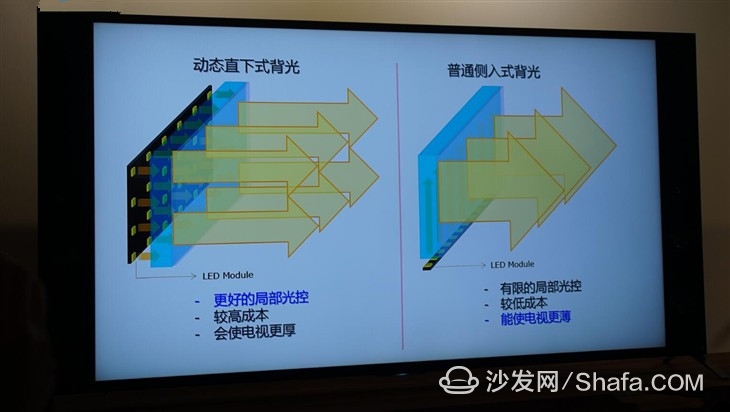
Of course, even direct-lit backlight LCD TVs have threes and fives. They still look at examples of building control lights. The more lights and windows that can be controlled are distributed, the more denser the pixels will be. Talking back to the LCD TV, it requires the TV backlight system to have more backlight beads that can be controlled independently. The more backlight lights and the more accurate the backlight control system is for different lamp beads, the better the LCD TV will be able to adjust the backlight brightness. Output control to close to the actual screen.
For example, in a city night scene, the bright stars of many lights and the roads in the areas where they shine are unusually bright. In the trees behind the lights, the shadows should have been deep and dark. If the lights and trees are distributed in the same backlight partition, it cannot control the backlight brightness output separately for light and dark, so only the backlight is fully turned on and then the backlight is controlled by controlling the liquid crystal deflection and blocking the backlight to achieve the dark part control. A major congenitly defect of the liquid crystal television lies in Can not be achieved through the LCD control real deep dark field, so there will be OLED publicity "pure black" concept.
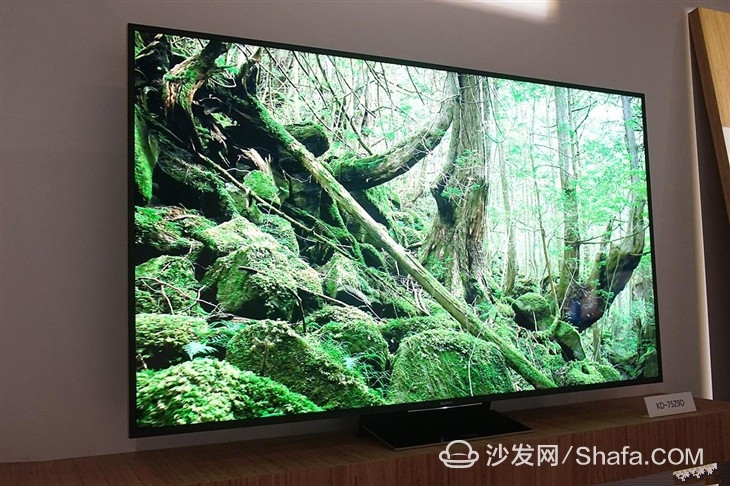

The Sony Z9D is a new flagship model introduced in the fall 2016 launch event. This was previously the X9300/X9400D, both with specially designed side-entry backlights. Independently of Sony's W and X series Z9D models for the first time in recent years equipped with its dynamic backlight system master version, this is a set of high-density LED backlight design LCD TV.
Because this time we received Sony's invitation to go to Japan's Tokyo headquarters to have a deeper contact with the Z9D TV, we saw its real backlight structure at the scene. A flat panel-size backlight has a dense array of LED backlights. Through the calculation of the backlight control circuit, it can perform a one-by-one lamp scan control like "snaking snakes," and can also backlight multiple backlights in a certain area. The lamp beads are turned on and Boost is used to increase the brightness to reach the output peak. From this structure, the Z9D backlight system can be described as a design with “abnormal density and each backlight can be controlled independentlyâ€.

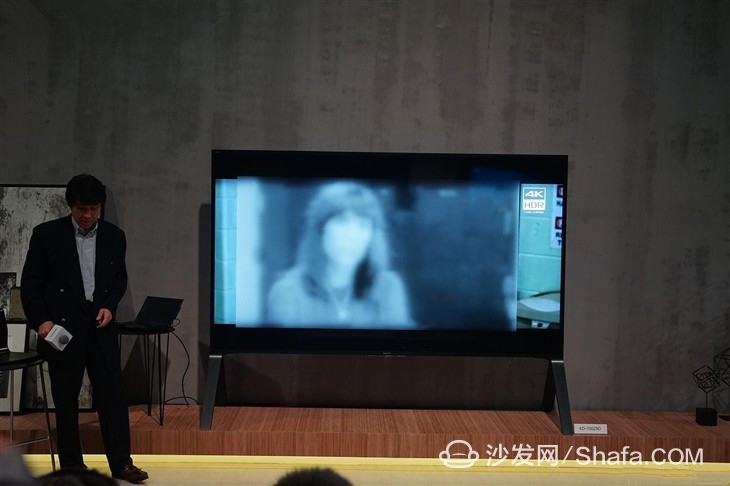

Perhaps some netizens who do not understand TV will ask why the introduction of a TV starts with the backlight. We can see this radar chart. For television systems, the 8K resolution, 120P frame rate, 12-bit color depth, and BT.2020 color space have each established a breakthrough for the television industry from their perspective. HDR is a brand-new technology that has just begun this year. In the past, because of the limitation of the backlight technology, the content of the film and television can only be contained in the very limited SDR (standard dynamic range) luminance range, so the television cannot display the more realistic contrast of the natural light and shadow. In the same sub-screen, because of the brightness control The sun will not be as glare as the real world, and in order to output the high brightness required for sunlight, the dark part of the picture will be pulled up by the backlight that is difficult to control by partition.

Sony Z9D has a super high brightness output, and each backlight lamp's independent control capability also allows it to close or depress the dark field brightness output exactly as OLED. For this reason, the TV's contrast value will be very alarming. , And the HDR effect is also becoming more memorable. In the Z9D technique in Tokyo, I was unable to take pictures because of the copyright issue of the video. So I came up with a picture that was similar to it.

The above comparison is able to conclude that the Z9D is even better because there is a professional-level reference on the spot. It is the RGB three-color OLED monitor BVM-X300 that costs several hundred thousand dollars. This broadcast is commonly used for film shooting, post-production and Television studios can use it to accurately understand the color trends, light and shadow information that the director wants to express when the film is shot. In the face of such powerful opponents as the X300, the unique high brightness characteristic of LCD TVs allows the Z9D to exert its HDR highlights to a greater degree while its precise dark field control does not significantly lag behind RGB OLEDs. From the perspective of Japanese engineers, he does not deny that OLED (tricolor RGB OLED) is the future display technology, and he also regards the LCD TV with dynamic backlight system master version as another display direction that is different from OLED.
Perhaps some people think that the backlight system affects only contrast between light and dark, but you may not know that the backlight has similar far-reaching effects on color space. This is a bit like a "white and ugly" feature that describes a woman's appearance. Under the guarantee of sufficient brightness, a conventional LCD TV can exert its best color performance. However, in a low-brightness picture, too low grayscale control will cause the color space under the low-brightness picture to be squeezed and shrunk, so the color expression will appear gray and color cast.

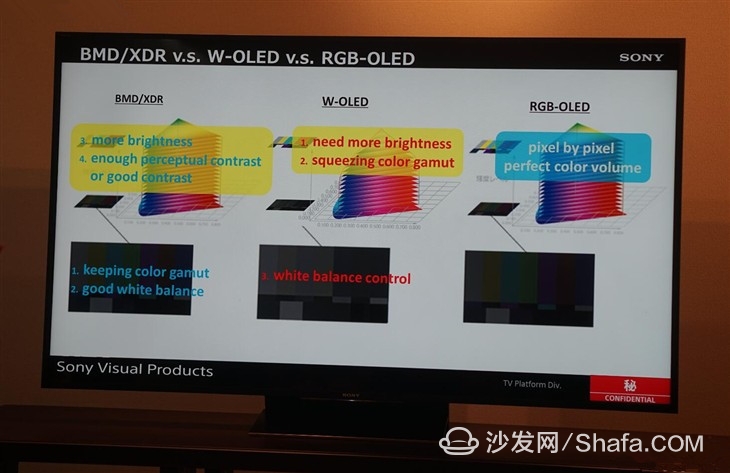
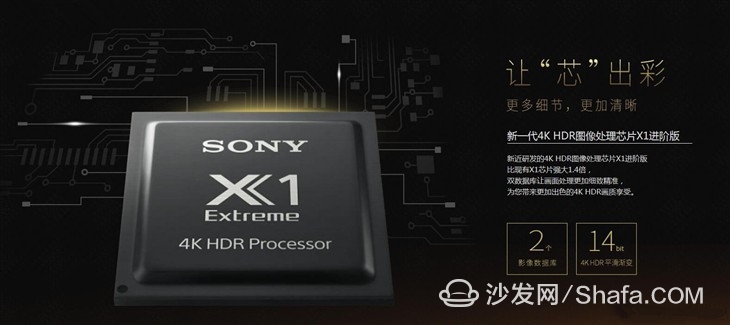

From this point of view, the Z9D introduces colors into the color space concept of the measurements. Compared with the way that the color gamut was calibrated through the three primary colors in the past, the expression of the color space after adding the brightness dimension is more three-dimensional, so the number of colors that can be displayed has also been broken. .

On the technical level, we have seen Sony's deep strength in breaking the limits of LCD TVs. On the market side, in fact, the Z9D also shows that Sony is closer to Chinese consumers. First of all, the price level, Sony's 65-inch Z9D official quoted at 32,999 yuan, while the same 65-inch Samsung KS9800 at the time of press release (Tmall Samsung home appliance flagship store) is still at 28,499 yuan, the price difference has been very weak. However, this TV has appeared in the comparison described above, from a technical point of view, it is very different from the Sony Z9D, so if you consider the top-level TV joint venture, in fact, Sony Z9D is also a price to talk about.
Sony Z9D 4K HDR LCD TV Sony China official website 32999 yuan>>Click to visit

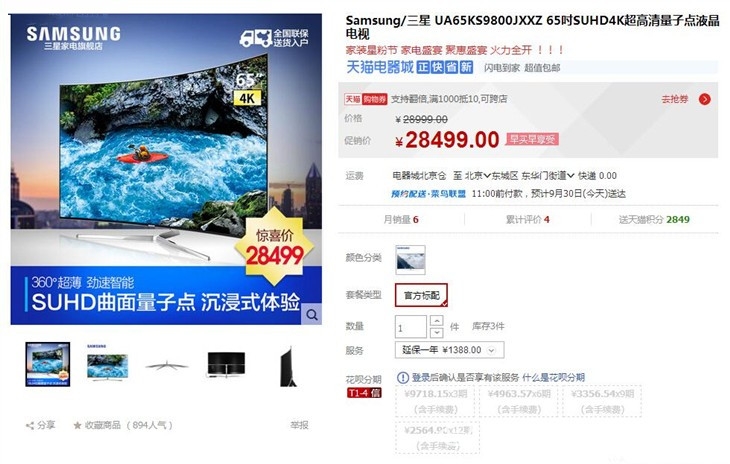
While the two Korean brands have led their supporters in the supply chain to actively promote curved surfaces, quantum dots, and OLEDs, Sony, which has always been not good at exaggerating propaganda, has suffered "somewhat." However, we have seen that Sony, which has a history of 70 years, still complies with it. At the beginning of the establishment of Jingshenda's operation philosophy, “let every serious and diligent technician make the most of their technical energyâ€. The Z9D proved to the world that it came from the technology of Sony, there was no reduction in backlight control capability due to curved surfaces, and there was no conflation of white OLEDs with (RGB) due to production yield issues. In the hearts of enthusiasts who follow the picture quality technology and want to experience the world's top audio and video effects, the Sony Z9D naturally possesses its position as the king.
Sony Z9D 4K HDR LCD TV Sony China official website 32999 yuan>>Click to visit

--- LCD TV two types of backlighting literacy ---
Imagine that near 11.11, you are going to bid farewell to the last single girlfriend to propose to his girlfriend for many years. The way is sure to be various. You don't bother to make a surprise attack on the gap between the three or five friends and eat dinner. Shaped candles placed in the mall or beach door called romance, you want to be more special, more unexpected ways to move his girlfriend, such as when she called her down the floor to work overtime, say something of concern to send her back to the building to continue work Just when turning around, the lights of the whole building suddenly went out. After a short time of doubt, the pixel pattern of I Love XX suddenly turned on, and the next thing would be very smooth.


This metaphor should allow you to understand the general working principle of the LCD TV, and then go back to our previous proposal example. To display the I Love XX graphics, you need to precisely control the lights behind each window, and only turn on the necessary lights. The light is visible and all other lights are off. This kind of backlight structure can be regarded as a direct type in a liquid crystal television. The more backlight sources, the more partitions he can use to flexibly control the brightness and darkness of each area of ​​the image.

The side-entry backlight is more like the white background of I LOVE SH. They can only be turned on or off completely.
If it is another mainstream backlight structure of LCD TVs - side-entry type, you can understand it as the entire office building only have windows on one of the edges of one of the up, down, left and right sides to have lights, and this row of lights can only be turned on at the same time. Closed, in order to allow it to display I Love XX fonts, each floor of the building should be equipped with a uniform structure that allows the backlight to shine even more out of the window, and after a row of lights to get the uniform lighting of the entire building, Windows that do not participate in the display of the English glyphs will also need to pull on the curtains so that they can bring a glyph image through the coherent lighting and curtain coverings. 
The side-in type reflects the backlight to the liquid crystal panel, the direct type is direct, and the concept of the area corresponding to the liquid crystal panel
The above is the two backlight structures of LCD TVs, direct-down and side-in. This unenlightened knowledge science link tells us that direct-lit backlights in which lights can be individually turned on and off are more conducive to controlling the brightness and darkness of a certain area, which corresponds to a direct-type backlight structure that is significantly better than side-entry type. ---Differentiated control of direct-lit backlights is very different ---
Of course, even direct-lit backlight LCD TVs have threes and fives. They still look at examples of building control lights. The more lights and windows that can be controlled are distributed, the more denser the pixels will be. Talking back to the LCD TV, it requires the TV backlight system to have more backlight beads that can be controlled independently. The more backlight lights and the more accurate the backlight control system is for different lamp beads, the better the LCD TV will be able to adjust the backlight brightness. Output control to close to the actual screen.
For example, in a city night scene, the bright stars of many lights and the roads in the areas where they shine are unusually bright. In the trees behind the lights, the shadows should have been deep and dark. If the lights and trees are distributed in the same backlight partition, it cannot control the backlight brightness output separately for light and dark, so only the backlight is fully turned on and then the backlight is controlled by controlling the liquid crystal deflection and blocking the backlight to achieve the dark part control. A major congenitly defect of the liquid crystal television lies in Can not be achieved through the LCD control real deep dark field, so there will be OLED publicity "pure black" concept.


Sony Z9D LCD TV
Here, finally able to lead us today's protagonist, Sony Z9D LCD TV. For its evaluation, as the title shows, it is not an exaggeration to say that it is the strongest flat-panel TV on the ground. The reason is that the scope is delimited to a flat-screen TV instead of an LCD TV, because even if it is currently available, OLED TV, Sony Z9D also fully capable of surpassing this display technology known as the future of television. The Sony Z9D is a new flagship model introduced in the fall 2016 launch event. This was previously the X9300/X9400D, both with specially designed side-entry backlights. Independently of Sony's W and X series Z9D models for the first time in recent years equipped with its dynamic backlight system master version, this is a set of high-density LED backlight design LCD TV.
--- Finer backlight partition means closer to pixel-level backlight control ---
Because this time we received Sony's invitation to go to Japan's Tokyo headquarters to have a deeper contact with the Z9D TV, we saw its real backlight structure at the scene. A flat panel-size backlight has a dense array of LED backlights. Through the calculation of the backlight control circuit, it can perform a one-by-one lamp scan control like "snaking snakes," and can also backlight multiple backlights in a certain area. The lamp beads are turned on and Boost is used to increase the brightness to reach the output peak. From this structure, the Z9D backlight system can be described as a design with “abnormal density and each backlight can be controlled independentlyâ€.

Ordinary direct backlight requires partitions to control groups of multiple backlight sources, while the Z9D can control each source
There are also some high-end TVs that claim direct-lit backlighting, and there are individual products that claim to be able to achieve thousands of backlight partitions, but perhaps the true performance is not as advertised as they are. The number of lamp beads combined with the control of liquid crystal molecules, because most models of direct-lit backlights currently can only bundle a number of backlight lamps into a group. This group of areas is called a backlight partition, such as the legend is 4 Lamp partitions, although this will be more accurate than the control of side-lit backlighting, but each of his backlight partitions is still difficult to control to the finest state. 
Just relying on the backlight to control light and dark is already very close to the image, and the side-entry type may be full white in this scene.
The Sony Z9D TV is the kind of TV that uses each backlight bead as a single backlight partition to control the light, and the backlight bead is distributed very densely under the LCD panel. This structure allows it to control only the backlight. Outputs a black and white image that approximates the real picture. In the previous Z9D conference, we saw such scenes. The status of the backlight when working is very close to the image, which means that it can be controlled precisely like an OLED in almost pixel-level units (actually a large number of pixels controlled by a single lamp). The small partitioned backlight naturally has a contrast output closer to the real image. --- Let direct backlight further sublimation cluster LED technology ---

Bundled LEDs allow precise control of the "flood" range of each lamp bead
On the basis of extremely fine backlight partitions, Sony's new dynamic backlight system master version will also be further reduced by a backlight's "irradiation" range through a clustered LED structure. This backlight structure can be imagined as each lamp bead is rounded. The beam bucket controls the direction of light. Without this beam structure, a single LED will diffract the backlight around, which will undoubtedly increase the control area of ​​the backlight partition. The purpose of the Sony Z9D is to make the area of ​​the backlight area as possible. More than minimum. --- Backlighting, the past technology breakthrough is least but it is very conducive to enhance the image realism ---
Perhaps some netizens who do not understand TV will ask why the introduction of a TV starts with the backlight. We can see this radar chart. For television systems, the 8K resolution, 120P frame rate, 12-bit color depth, and BT.2020 color space have each established a breakthrough for the television industry from their perspective. HDR is a brand-new technology that has just begun this year. In the past, because of the limitation of the backlight technology, the content of the film and television can only be contained in the very limited SDR (standard dynamic range) luminance range, so the television cannot display the more realistic contrast of the natural light and shadow. In the same sub-screen, because of the brightness control The sun will not be as glare as the real world, and in order to output the high brightness required for sunlight, the dark part of the picture will be pulled up by the backlight that is difficult to control by partition.

At present, the brightness of most TVs is still at the three-digit Barnett level, and it is difficult to control light. It is unrealistic to achieve a high dynamic light range from 6000 to 0.8 on the right, so HDR and Ultra The emergence of high-brightness HDR TV
The Sony Dynamic Backlight System Master Edition also improves the luminous performance of the lamp bead based on the fine partitioned backlight. Although the official has not yet announced the highest brightness it can achieve, the value of the private discussion may reach an astonishing 4,000 nits. At this stage, the flagship positioning OLED is only 5-600 nits, and the Samsung KS9800 is only 1000 nits. ---Light Control Capability Super OLED Color Reduction Close to Professional Video Production Monitor ---
Sony Z9D has a super high brightness output, and each backlight lamp's independent control capability also allows it to close or depress the dark field brightness output exactly as OLED. For this reason, the TV's contrast value will be very alarming. , And the HDR effect is also becoming more memorable. In the Z9D technique in Tokyo, I was unable to take pictures because of the copyright issue of the video. So I came up with a picture that was similar to it.

The contrast scene is a bit like this picture, except that the seawater is far greener than the example picture.
One of the scenes on the technical explanation scene is the island scenery video from a 4K HDR technology. The main body of the scene is the aquamarine sea surface and the reef rock cave 2-3 meters high in the foreground. There is a clear contrast between high light and dark field in this seascape. In the picture displayed by Z9D, high-brightness seawater has a higher brightness output than white light OLED TVs and a certain quantum dot flagship. Fine backlight control allows it to restore the highly transparent texture of seawater, and the blue sky and white clouds are due to different light brightness. Also more three-dimensional. In the dark scene, the obvious difference is that the white light OLED will further control the brightness of the HDR video. Under this scenario, its dark field is darker than the Z9D, and it has a certain color cast. In the same scene, if the HDR quality processing function is turned off, the OLED TV will reduce the contrast due to the darkness of the shadow processing. The above comparison is able to conclude that the Z9D is even better because there is a professional-level reference on the spot. It is the RGB three-color OLED monitor BVM-X300 that costs several hundred thousand dollars. This broadcast is commonly used for film shooting, post-production and Television studios can use it to accurately understand the color trends, light and shadow information that the director wants to express when the film is shot. In the face of such powerful opponents as the X300, the unique high brightness characteristic of LCD TVs allows the Z9D to exert its HDR highlights to a greater degree while its precise dark field control does not significantly lag behind RGB OLEDs. From the perspective of Japanese engineers, he does not deny that OLED (tricolor RGB OLED) is the future display technology, and he also regards the LCD TV with dynamic backlight system master version as another display direction that is different from OLED.
--- Perhaps you do not know the backlight and color ---
Perhaps some people think that the backlight system affects only contrast between light and dark, but you may not know that the backlight has similar far-reaching effects on color space. This is a bit like a "white and ugly" feature that describes a woman's appearance. Under the guarantee of sufficient brightness, a conventional LCD TV can exert its best color performance. However, in a low-brightness picture, too low grayscale control will cause the color space under the low-brightness picture to be squeezed and shrunk, so the color expression will appear gray and color cast.

Normal side-in backlight (dark part color difference) and ordinary direct type backlight with backlight partition (not bright enough)

On the left is the Dynamic Backlight System Master Edition with higher brightness, high contrast from the partitioned backlight, and precise color control
For white light OLEDs, its biggest limitation is the lack of brightness output, which will reduce its ability to reproduce color under high-brightness images. And because white light OLEDs are actually similar to LED-backlit TVs, which use white OLED light-emitting units in combination with color filters to achieve color output, it can also exhibit poor white balance deflection at low light levels. --- New X1 Advanced Image Processing Chip ---

New X1 Advanced Top Quality Processor

14-bit grayscale control solves the problem of gradient color faults
The Z9D not only significantly exceeds the LCD TV brightness peak through the dynamic backlight system master version, the new X1 image processing chip advanced version has an operating capacity of 14% X1 chip, it has 14-bit grayscale control performance, in the low-light screen Can maintain a brilliant wide color gamut output. At the same time, there will not be a fault in the color gradient image due to lack of grayscale control. From this point of view, the Z9D introduces colors into the color space concept of the measurements. Compared with the way that the color gamut was calibrated through the three primary colors in the past, the expression of the color space after adding the brightness dimension is more three-dimensional, so the number of colors that can be displayed has also been broken. .

HDR Dynamic Image Recreating Effect Demonstration
Above, it is only part of our answer to the Z9D backlight, which is the most technological innovation of the Sony flagship machine in Taiwan. It can be said that it breaks through the inherent shortcomings of the LCD black space difference, making this most mature display technology has comparable Even beyond the technical strength of OLED. Of course, in addition to the backlight technology, the new X1 advanced image processing engine on Sony Z9D also brings deeper image signal processing capabilities such as HDR dynamic image reconstruction, 14Bit smooth gradation, and dual image library image analysis. In addition, it is also equipped with Sony's flagship TV familiar with the 4K sharp image processing engine PRO, Terricolored display technology, advanced light control PRO and MotionFlow dynamic smoothing this "big four", these currently the most cutting-edge Sony Quality processing technologies are all assembled in the Z9D flagship new product. As a result, Sony defines it as the "flagship of the picture quality." - -30000 yuan flagship also has a cost -
On the technical level, we have seen Sony's deep strength in breaking the limits of LCD TVs. On the market side, in fact, the Z9D also shows that Sony is closer to Chinese consumers. First of all, the price level, Sony's 65-inch Z9D official quoted at 32,999 yuan, while the same 65-inch Samsung KS9800 at the time of press release (Tmall Samsung home appliance flagship store) is still at 28,499 yuan, the price difference has been very weak. However, this TV has appeared in the comparison described above, from a technical point of view, it is very different from the Sony Z9D, so if you consider the top-level TV joint venture, in fact, Sony Z9D is also a price to talk about.
Sony Z9D 4K HDR LCD TV Sony China official website 32999 yuan>>Click to visit


Sony Z9D (Official Quote) and Samsung KS9800 (E-commerce Terminal Price) Domestic Sales Prices
In the global market, the official offer of the Sony 65Z9D in North America is 5,999 US dollars, equivalent to 40,000 yuan, which is 120% of China's selling price. Because of the reason of Japan's adoption of open prices, I did not see price information on the official website, so I cannot compare them. Looking only at the North American market, the Sony Z9D TV is undoubtedly very well-priced in China. While the two Korean brands have led their supporters in the supply chain to actively promote curved surfaces, quantum dots, and OLEDs, Sony, which has always been not good at exaggerating propaganda, has suffered "somewhat." However, we have seen that Sony, which has a history of 70 years, still complies with it. At the beginning of the establishment of Jingshenda's operation philosophy, “let every serious and diligent technician make the most of their technical energyâ€. The Z9D proved to the world that it came from the technology of Sony, there was no reduction in backlight control capability due to curved surfaces, and there was no conflation of white OLEDs with (RGB) due to production yield issues. In the hearts of enthusiasts who follow the picture quality technology and want to experience the world's top audio and video effects, the Sony Z9D naturally possesses its position as the king.
Smart TV/box information can focus on smart TV information network sofa butler (http://), China's influential TV box and smart TV website, providing information, communication, TV boxes, smart TVs, smart TV software, etc. Answering questions.
Metal Dome Array For Remote Control,Metal Domes Array ,Remote Control Metal Domes,Metal Dome Array For Remote
zhejiang goldcity technology co,ltd , https://www.membrane-gc.com
